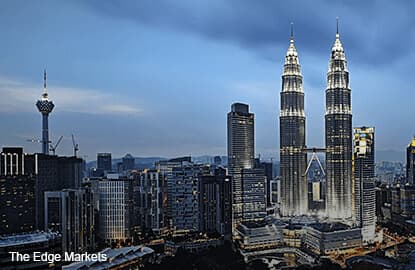
MALAYSIA is probably stuck between the likes of Singapore and less sophisticated tourism markets. The six strategies that Tourism Malaysia rolled out for 2017 still very much follow the old playbook: promote eco-tourism; intensify use of latest technology for publicity; leverage Visit Asean@50 campaign by promoting intra-Asean tourism, sports-based events including SEA Games and Asean Para Games in August and September; monetise culture, arts and heritage; boost domestic tourism; and maximise integrated campaigns to promote Malaysia.
Tourism Malaysia deputy director-general (advertising and digital) Datuk Seri Abdul Khani Daud also noted some 300 events that Malaysia will be hosting this year as well as three state tourism campaigns: Visit Beautiful Terengganu 2017, Visit Pahang 2017 and Visit Perak 2017. “We will also highlight new tourism products like Design Village Outlet Mall in Penang, which opened last year, and by the end of 2017, we will have the 20th Century Fox World Theme Park in Genting Highlands.”
In recent years, Malaysia has taken small steps in promoting the country via digital channels, including its trulyasiatv.com and My Tourism Channel, as well as working with travel portals such as TripAdvisor.
Tourism Malaysia and Ministry of Tourism and Culture officials did not disclose many details of what digital strategies they would employ except to mention that Malaysia is working with Chinese internet giant Alibaba on a platform to reach out to Chinese audiences.
Ultimately, as tourism and travel industry professionals know all too well, the business is as much about hardware as it is about software. Sure, the hardware for tourism is in place. The country has developed the tourism sector for several decades now and is widely seen as the hub for budget travel in the region.
In the past years, Malaysia has relaxed visa requirements in a bid to spur the tourism sector. This includes allowing tourists from selected countries to extend their visa as well as implementing electronic visas.
What then when the tourists get here?
According to Tourism and Culture Ministry secretary-general (culture) Datuk Abdul Ghaffar A Tambi, the ministry is aware of the problems that tourists face in Malaysia and has been trying to address the issue. The first example he cited was complaints about local taxi drivers. Abdul Ghaffar pointed out that the government has been working to improve the taxi service and allow ride-sharing apps like Uber and Grab to operate in the country.
Secondly, he said, the ministry has been conducting training programmes for frontline staff from both the public and private sectors. This is to ensure that everyone who deals with tourists, be it immigration officers or hotel front desk staff, can offer good service. “We have to ensure that when tourists come to Malaysia, they feel at home.”
Unlike in Thailand and Singapore, Malaysia’s tourism planners are still talking about attractions and destinations instead of experiences and the specific demands of different travellers, which have evolved over the years.
Tourism industry professionals say travellers now are more sophisticated in the things they want to see and feel. “In the past, you could sell a destination. Go to this country and see this place. But now, we have to sell more than just the place. Now, it is ‘go to this country, see this place and you can experience these things or other things and by the way, you can also go nearby to do other things’,” says a travel operator based in Singapore.
Save by subscribing to us for your print and/or digital copy.
P/S: The Edge is also available on Apple's AppStore and Androids' Google Play.